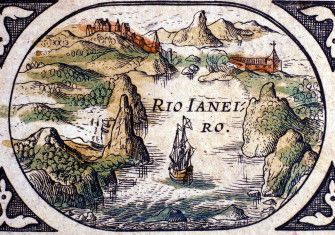The World Divided at Tordesillas
With a line on a map, the Treaty of Tordesillas split the world between Spain and Portugal. Was it a grand refutation of papal authority or an extension of it?

Though it is now most famous for the treaty that bears its name, the town of Tordesillas in the province of Valladolid had been a place of great significance for centuries before the events of 1494. An important defensive outpost on the River Duero during the ‘Reconquista’ of Castile and León from the Moors in the tenth century, the palace built by Alfonso XI in 1325 became a popular location for the monarchs of Castile to hold meetings of the Cortes, or Parliament, during the 15th century and was the home of Joanna I of Castile for almost 50 years until her death in 1555. It was there on 7 June 1494 that the Treaty of Tordesillas was created, before being ratified by the ‘Catholic monarchs’, Isabella of Castile and Ferdinand of Aragon, a month later on 2 July and signed by King John II of Portugal in Setúbal on 5 September 1494. And with that, Spain and Portugal agreed to carve up the world.
Iberian enemies







